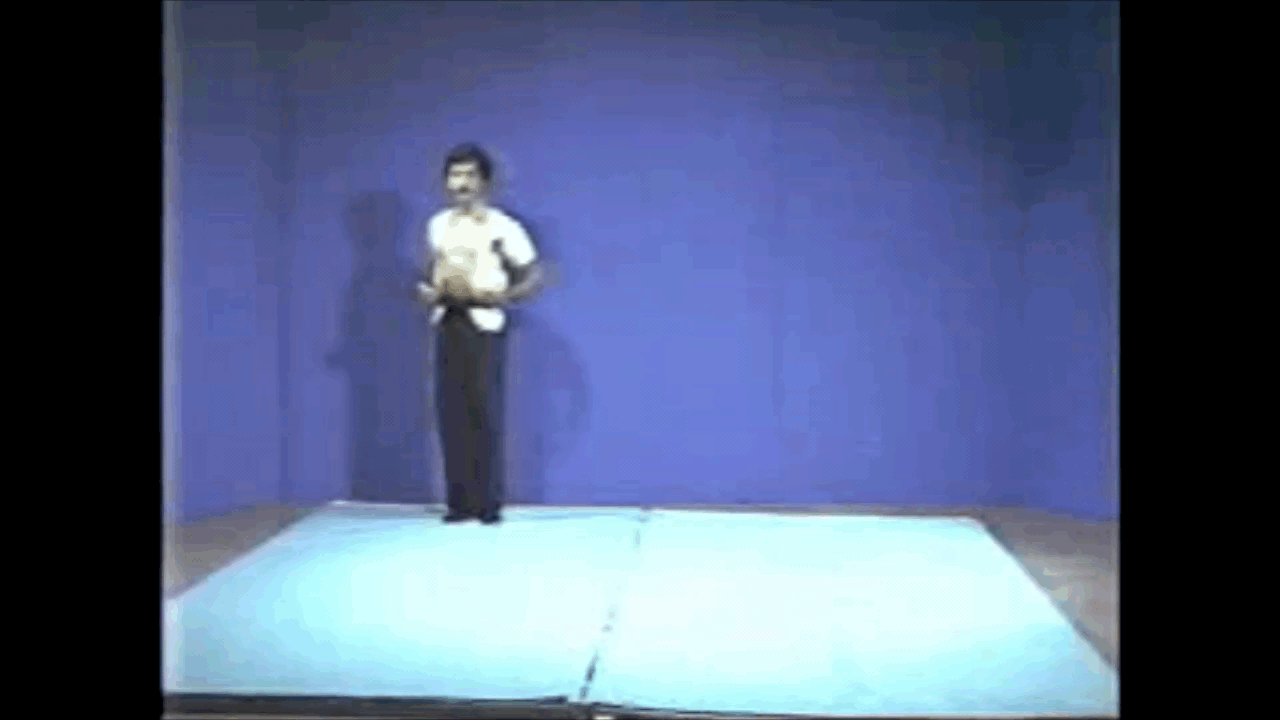I saw a lot of repeats. Video says its made of 6 moves. They probably mean 6 techniques because there were more than 6 movements in the video. If it's really made up of only 6 techniques then that's the same number of techniques that make up the beginner bow in Jow Ga Kung Fu.
They were listing key moves. There's actually 2 more they didn't list (and I would count the crane stance as a stance instead of a move, so I'd say 7 moves). This one does have a lot of repetition of those techniques. The kukkiwon forms tend not to repeat quite as much. However, I was more listing it for an example of impractical techniques.
For the most part some of these moves look practical to me. This is where I was taught to strike my double back fist. It's doable if you can drive the power correctly. This is found in the Jow Ga beginner form.
The spinning moves in TKD are deceptive. Most people think a kick will be the end result so that 's what most of us defend against. But throw a punch and the whole game changes
Here's your spinning punch from that form.
To be clear, I was mainly referring to the crane stance diamond block (low block to one side, high block to the other) and the double mountain block (arms look set to do chest flies on a workout machine). These are described in the forms as blocking two attacks, one from each side. So are the other double blocks.
One note: the
only strikes in Keumgang are the palm strikes. The double backfist is a double block. The spinning punch is a hinge block, using the elbow and forearm to block an attack.
I am a big proponent of the idea that if you describe something in a form, that should make sense before you look for any deeper meaning.
For example, if I were to say, "The sky is green, which means that we should love each other." This would make no sense. Yes, people should love each other. A world where everyone loves each other would be a great world to live in. But the message is undercut by my first saying, "The sky is green." It isn't. If I said, "The sky is red", then at least at some point I would be correct, because it is often red at sunset. But to say the sky is green? That's just weird. Even if the sky were green, does that even carry the message I want it to?
Let's go back to the crane stance. The application of the technique does not match the use of the techniques in the form. In the form, you start by entering crane stance, then execute the block with both hand simultaneously, then you do
not execute a kick. The application is a block, then a hammerfist, then bring the knee up to chamber a side kick. Using our earlier analogy of words, it would be like if the form was "The bowling ball knocked over the pins", but yet the application was "Ball the knocked pins the over bowling." It worked for Yoda and for the Sherriff of Rottingham (in the Mel Brooks version of Robin Hood), but it doesn't really work for me.
This is my issue with a lot of the TKD applications. They do not show the techniques as they are described in the form, which means the forms fail at that first level: making sense before being reinterpreted. Instead, they show something that kind of somewhat maybe looks like some parts of the technique in the form. The techniques are done in a different order, with a different motion, a different chamber and execution point. But, because the hand is moving in roughly the same direction, a hammerfist from your hip to their solar plexus is treated as an application of a down block that travels from your shoulder to their thigh level.
I don't want to try and dictate how much people
can read into the forms. But it's kind of like a Hollywood movie. If it requires fanfiction to justify a plot hole, then it doesn't mean the plot hole doesn't exist. It's a problem in the writing of a movie. However, if a story recognizes that it is fiction which has taken artistic license, then you cannot judge the movie on its inaccuracies, but only its inconsistencies.
If you have forms that are designed to teach practical application, then the forms should directly teach practical application. Further digging into the forms and stretching of the material in them can yield additional results. But the form should stand on its own without being twisted just to make sense in the first place. If you have forms that are intended to be artistic representations of martial technique instead of designed to teach practical application, that is also fine. It is not a plot hole to have magic exist in Harry Potter, and it is not bad design for forms to fail at application if that is not their purpose.

